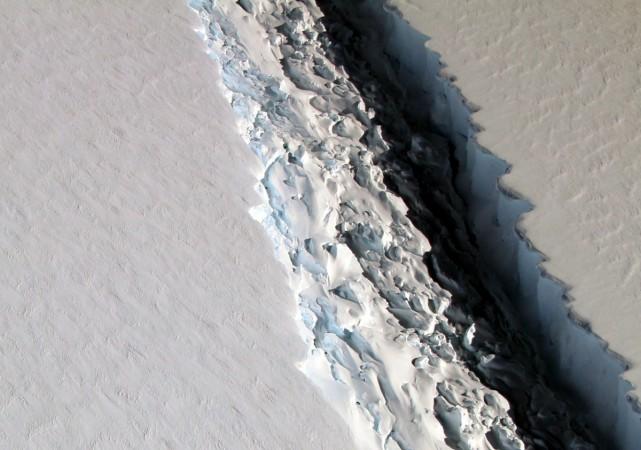
A huge iceberg -- almost 500 meter thick floating on the seas at the edge of West Antarctica -- is ready to break away from the continent, according to scientists.
NASA's Chandra X-ray Observatory has just found the universe's largest particle accelerator
The Larsen C ice shelf in Antarctica is one of the 10 largest ever recorded. A long-running rift in the Larsen C ice shelf grew suddenly in December last year. In just two weeks, the rift widened to a further 18 km and now the 5000 sq km iceberg remains connected to the rest of the ice shelf by a tiny 20 km peninsula, as reported by BBC News.
The massive rift in the Larsen C ice shelf was photographed on November 10, 2016, by the scientists of NASA's IceBridge mission.
According to NASA, ice shelves are the floating parts of ice streams and glaciers and they buttress the grounded ice behind them. When ice shelves collapse, the ice behind accelerates toward the ocean, and cause a rise in the sea level. The Larsen C abuts a smaller ice shelf that disintegrated in 2002 after developing a rift similar to the one now growing in Larsen C.
Experts at the University of Swansea are worried that the iceberg will now break away at any moment. Professor Adrian Luckman, told BBC News: "If it doesn't go in the next few months, I'll be amazed."
Although Luckman said this breakage will not have a direct impact on rising sea levels, there is a likelihood that it will leave the rest of the shelf fragile and vulnerable to further break up.
NASA says that the IceBridge scientists measured the Larsen C fracture to be approximately 113 km long, more than 300 feet wide and about 0.5 km deep. The crack completely cuts through the ice shelf but it does not go all the way across it – once it does, it will produce an iceberg roughly the size of the state of Delaware.
NASA's Operation IceBridge collects data on changing polar land and sea ice and maintains continuity of measurements between NASA's Ice, Cloud and Land Elevation Satellite (ICESat) missions. The original ICESat mission ended in 2009, and its successor, ICESat-2, is scheduled for launch in 2018.















